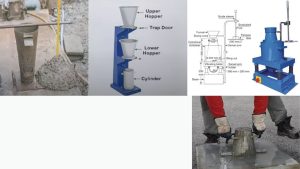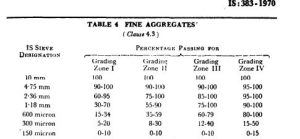Bridge Interview Question for Civil Engineers |civil Engineering
What is Balanced Cantilever Bridge?
If continuous spans are used, the governing bending moments can be minimized and hence the individual span lengths can be increased. But unyielding supports are required for continuous construction. If supports settle, the net moments get modified in magnitude as well as in sense, resulting in distress to the structure. Hence for medium spans in the range of about 35 to 60 m, a combination of supported spans, cantilevers and suspended spans may be. The bridge with this type of superstructure is known as balanced cantilever bridge.
What is the role of IRC in designing road bridges?
The Indian Road Congress (IRC) has formulated Standard Specifications and Codes of Practice for road bridges with a view to establish a common procedure for the design and construction of road bridges in India. The specifications are collectively known as the Bridge Code. Prior to the formulation of the IRC Bridge Code, there was no uniform code for the whole country. Presently, we are following the IRC Bridge Code.
How to check the shuttering of pier
To check the shuttering of a pier, inspect the formwork for proper alignment, stability, and quality of materials.
- Inspect the formwork for any misalignment or gaps
- Check the stability of the formwork by ensuring it is properly braced and supported
- Verify the quality of materials used for the formwork, such as the strength of the timber or steel
- Ensure that the formwork is properly secured to prevent any movement during concrete pouring
- Inspect the formwork for any signs of damage or deterioration
What is Pile Foundation?
Answer- This is a kind of deep foundation used to resist the heavy and uneven load from the Vehicles. Pile foundation is opt where the soil bearing capacity is very low and where the water body is very near to the structure.
What is the main precautions taken during Bridge constructions
Precautions during bridge construction include proper planning, quality control, safety measures, environmental considerations, and regular inspections.
- Thorough planning and design to ensure structural integrity and stability
- Quality control measures to ensure the use of high-quality materials and proper construction techniques
- Implementation of safety measures to protect workers and the public, such as fall protection systems and traffic control
- Consideration of environmental impacts and mitigation measures, such as protecting water bodies and wildlife habitats
- Regular inspections during and after construction to identify any defects or issues that may arise
What are the Types of Pile Foundation?
First devided on the basis of Function and the materials from which the Pile is made.
1. Based on Function-
Load Bearing Pile
a. End Bearing Pile- If these is a hard strata (Rock) under the the Foundation.
b. Friction Pile- The Pile will resist the Friction Force when the load will transfer from above to the soils. mainly in the sandy soil.
Sheet Pile- To resist the Horizontal force or safe from the shear failure acts due the Water or earthquake.
2. Based on Materils-
- Timber Pile
- Concrete Pile
- Steel Pile
- Composite Pile
What is Cut Of Level?
Answer- This a the Level from where the Unsound Concrete is removed or Cut the Above portion of the Concrete and left the Group of Pile under Foundation.
What is DBM quantity in your project
DBM quantity refers to the quantity of Dense Bituminous Macadam used in the project.
- DBM is a type of road construction material made of crushed aggregates and bitumen.
- The quantity of DBM required depends on the design specifications and the area to be paved.
- DBM is typically used as a base or binder course in road construction projects.
- Example: In our project, we used 500 tons of DBM for the road pavement.
What is the Minimum Diameter of Pile as per the IS-Code?
Answer-
Marine-1000 mm
C I S (Cast In sits) Board Pile- 300 mm
I R C – 950 mm
What is the Minimum Casting Distance above the Cut-off Level.
Answer- At least 600 mm as per MORTH, so that unsound concrete (mud) Comes to the level of Casting concrete.
What is the minimum Percentage of vertical reinforcement in a Pile?
According to IRC 78, You could answer 0.4 % of the Total area of the Pile.
What is the Minimum Clear Cover From the Main Bar in the Pile?
Answer- A 55 mm clear cover should be there. Without cover, steel gets exposed to the environment and corrodes easily. Without cover, there will not be proper packing of concrete and the bond between steel and concrete.
What is the Main Clear cover distance from the Bottom main Bar in the Pile Cape from the (C. O. L) Cut of Level?
Answer- 60 mm. distance covered from the C.O.L to the Point where the Pile cap starts.
What are the F.O.S (Factor of safety) of the Pile?
Answer- This has different answers for different Pile as explained below-
2.5 % In Friction Pile
3 % In end bearing Pile
and it has a 2.5 % Bearing Capacity.
What is the Maximum offset in the Bearing and pedestal both Outside?
Ans- 150 mm
What is the Tolerance in the Top Level Bearing & Pedestal?
Answer -5 mm and + 5 mm. If more than this, there could be a problem with the deck slab or Road level in the bridge.
What is the Tolerance in Dislocation of Bearing and Pedastal?
Answer- 3 mm
Tilting tolerance of Bearing & Pedestal?
Answer- 0.0001 mm.
Very less numerical digits show that the pedestal and bearing will transfer the load to Pier Cap.
What are the stages of a bridge design?
The design process of a bridge can be divided into four basic stages:
- Conceptual Design Stage – the purpose of this stage is to come up with various feasible bridge schemes and to decide on one or more final concepts for further consideration.
- Preliminary Design Stage – in this stage, selection of the best scheme from proposed concepts are finalized and ascertain the feasibility of the selected concept and refine its cost estimates.
- Detailed Design Stage – in this stage, finalization of all the details of the bridge structure are completed so that the document is sufficient for tendering and construction.
- Construction Design Stage – this design stage is important to provide step-by-step procedures for building the bridge.
What do you mean by Refractive Index (R. F)
Answer- It is the Reference Scale meaning the Ratio of 1 Unit value from the Map to the Real scenario.
1 cm= 500 m
R.F= 1/50000
What is the Difference Between the Plain Scale and the Diagonal Scale?
Answer- Plain Scale is used for the 2 D Measurement and Diagno Scale is Used for the 3 D Measurement.
What is the Bulking of Sand?
Answer- Bulking Increase gradually with Moisture Content. If the moisture content increases upto 4 % then the Bulking Volume of sand will increase upto 25 %.

What is Shrinkage?
Answer-Concrete gets contraction when moisture removes on drying, This phenomena is known as Shrinkage. Cracks develop in the concrete surface due to the reduction in volume and strength reduces.

How much test to Check the Workability of the Concrete?
Answer- These are the test used to know the workability of concrete.
- Slump Concrete
- Compaction Factor
- Vee-Bee Test
- Flow Table Test
Workability means with how easy the prepared concrete will placed, compact and finsih in the structure without any extra effort. When the prepared concrete reaach from the RMC Plant to the site, then the above test must be checked to know the workanility f the concrete.

What is the Least of Theodolite & Compass?
Answer- Theodolite = 20” (20 Seconds)
Compass = 30″ (30 Seconds)
You should also know these Data’s-
Dumpy Level= 5 mm
Auto Level= 5mm
Total station= 1 Sec
How Many Zone of a Sand Exist?
Answer- There are 4 Zones categorised named as
Zone I
Zone II
Zone III
Zone IV
When you see the picture below, it will clear to how these Zones are Distinguish on the basis of Fine aggregate as per the requirements of any grading zone.
What is the Initial and final setting time of Cement?
Answer- Initial Setting time- 30 minutes (Duration in which When the concrete is prepare with mixing and ready to placing and compaction)
Final Setting time- 10 Hours or 600 Minutes (Time duration in which the mixing is start and strength of the structure gain)
What is a Full form of DPR?
Answer- Detailed Project Report
When any civil engineering structure is build, there is a project report which Mentioned all the specification. In this report, It includes Material and quantity of materials, Machinery, workmanship with the building of foundation, sub structure and superstructure from the start to end of the project.
What is the Minimum soil bearing capacity for pile foundation?
Answer- This is dependent on a lot of factors.
- Soil makeup,
- Entrained moisture
- Different Seismic zone, and
- Weight
Generally The minimum for average structures and for all soils is 1500 PSF (Pounds on a square foot ), meaning that a nuclear density test must show that the soil can bear 1500 Pounds on a square foot area without compression.

